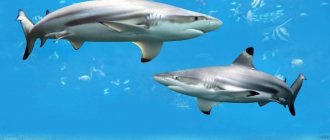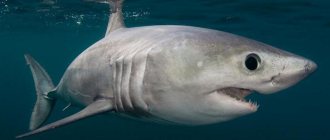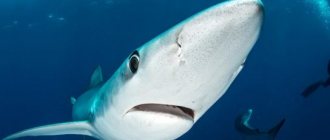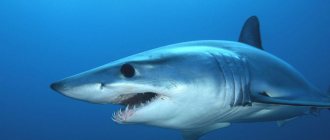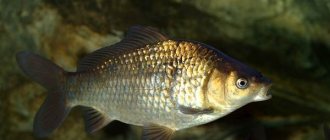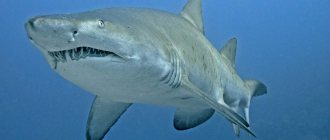During the holiday period, Russian tourists prefer to choose vacation spots and resorts close to the seas and oceans. These are mainly Mediterranean countries - Turkey, Egypt, Greece, Spain, Italy, Tunisia. They are followed by more distant maritime powers - China, Thailand, Cuba, as well as Russian, Bulgarian and Ukrainian resorts on the Black Sea. Unfortunately, a pleasant seaside holiday is often fraught with an unexpected threat.
Over the past few years, reports of shark attacks on tourists have become more frequent, and this is increasingly happening in famous resort areas. In this regard, the question of the distribution range of sharks dangerous to people is becoming increasingly relevant. If you are planning a vacation, be sure to find out in which seas and oceans you may be at risk of encountering sharks, especially if you are a diver or surfer.
What does a shark look like - general characteristics
Sharks, whose diversity on Earth exceeds 500 species, belong to the cartilaginous elasmobranch class of vertebrate fish.
In no case should they be considered mammals, like dolphins or whales; this predator is a fish.
Most species of this predatory fish are characterized by general external characteristics:
- an oblong body, similar to a torpedo, tapering towards the mouth (rostrum) and towards the tail, which ends with a heterocercal fin;
- lateral lamellar gills resembling slits, with 5 to 7 slits on each side;
- huge black-matte eyes, behind which there are openings entering the throat, called splashes.
Sea hunters can boast of a variety of skin colors (white, gray, blue, spotted, striped), depending on the species to which they belong.
Circulatory system [edit]
A cross-sectional view of the shark's unique four-chambered heart chambers: Sinus Venosus, Atrium, Ventricle, Conus Ateriosus.
Sharks have a single-circuit circulatory system centered around a two-chambered heart. Blood flows from the heart to the gills, where it is saturated with oxygen. This oxygen-rich blood is then carried throughout the body and tissues before returning to the heart. When the heart beats, deoxygenated blood flows into the sinuses. The blood then flows through the atrium to the ventricle before entering the conus arteriosus and leaving the heart. [22]
External and internal structure of a shark
Most of them have a streamlined, rounded body shape, with an elongated and narrowed front part and head - all this significantly helps to reach speeds of up to 80 km/h.
However, there are external differences among sharks
, such as:
- A hammerhead fish whose head is precisely shaped like a compressed hammer. On the T-shaped head, next to the nostrils on the sides, there are eyes that have binocular vision.
- “Sea angels” - due to their flat body, they look like stingrays and live on the bottom.
- Carpet sharks, like angelfish, are adapted to live on the bottom. On the sides of the head there are outgrowths that resemble fringes and help to camouflage well in algae thickets.
They differ from each other in size: some reach 20 meters in length, while others, the smallest, have a body length of only 17 centimeters.
Shark scales
In phylogenetics, the shark is considered the most ancient representative among fish due to the structure of its skin. Consisting of durable diamond-shaped plates with spikes that fit tightly together, the skin appears very smooth.
Such a durable placoid scaly covering of the skin protects it well from attacks by other animals and from parasites, but still fetters movement, like chain mail.
Throughout its long evolutionary period, the skeleton has not undergone any changes, but has completely lost bones, which have replaced cartilaginous connective tissue.
Modern sharks have a skeleton and skull made of cartilaginous tissue.
Its skeletal axis, like everyone else’s, is the spine, consisting of cartilaginous amphicoelous vertebrae. The shark skull is divided into two sections: the oral skeleton with gill apparatus and the cranium. Its body is equipped with separate fins located in the tail and back areas, and paired fins in the chest and abdominal areas.
The muscular system of these predators is responsible for the continuous functioning of the heart, for the arteries and internal organs, and for movement itself, whose muscular functionality is divided into bundles of individual muscles.
Since there is no swim bladder in a shark carcass, the fins, spine and large liver are responsible for its buoyancy.
Fins
A shark's fins allow it to quickly rise and fall to different layers of water. Most sharks have eight fins:
- a pair of pectoral fins;
- pair of ventral fins;
- two dorsal fins;
- anal fin;
- caudal fin.
The shark's pectoral fins are very rigid, due to which it has excellent maneuverability.
Representatives of the order Hexanchiformes have only one dorsal fin. The anal fin is absent in the orders Squaliformes, Squatiniformes and Pristiophoriformes.
How many teeth does a shark have
The shark's jaw is located extremely inconveniently for fish. In order to grab onto the victim, she has to bend to the side or even roll over onto her back, but this does not reassure her victim at all.
The jaw, with numerous rows of sharp and jagged teeth at the edges, easily bites into the flesh, giving no chance of escape.
The number of teeth and rows varies depending on the species of fish. In some, the number of rows reaches 50, and the total number of teeth reaches 1.5 thousand, like a reef shark. The largemouth shark has up to 10 thousand teeth per 22 rows.
Lost teeth are not a big problem for this predator, since they are replaced by teeth from other rows, representing a kind of conveyor belt.
Veils[edit]
Main article: Dermal denticles
Unlike bony fish, sharks have a complex skin corset consisting of flexible collagen fibers arranged in a spiral network surrounding their body. This acts as an exoskeleton, providing attachment for their swimming muscles and thus saving energy. A similar arrangement of collagen fibers has been found in dolphins and squid. Their dermal teeth give them hydrodynamic advantages as they reduce turbulence while swimming.
Where are sharks found?
Numerous species of predatory fish live in all oceans and seas, but not all of them are so dangerous to humans.
Shark habitats
For example, the bearded shark is found in the Indian Ocean, the whale shark can be found throughout the World Ocean, the giant shark prefers seas with temperate or cool waters.
But some of the dangerous predators are often observed in crowded places: off the sandy beaches of Africa, Florida, California, off the Hawaiian Islands, resorts in Egypt, Southern Primorye (Russia), off the coast of Australia.
There are also freshwater predators that live in the lake water of Nicaragua, and are also capable of living in both salty and fresh waters (common gray and blunt-nosed sharks).
What do sharks eat?
Some of the representatives of sea hunters feed on plankton and small inhabitants of the bottom, but, basically, this is an omnivorous predator that attacks whales, dolphins, fur seals, humans and its own relatives, and does not disdain cans, iron, plastic and other garbage.
The lack of disgust for a variety of food, even dead ones, allowed this predator to survive centuries of competition with other representatives of the aquatic world.
Shark breeding
Sharks, like cartilaginous fish, have a common process of internal fertilization. The developed fetus in the uterus is independent after birth and is adapted to fight for its survival.
In cubs, the entire body with the digestive system, musculoskeletal system and sensory organs is fully developed, which contributes to rapid growth.
These predators are divided into viviparous, ovoviviparous, and oviparous.
Viviparous individuals give birth to from 20 to 40 cubs, which, while still in the womb, turn out to be dangerous predators, eating their own, which is why only one can be born.
Shark egg capsules
Ovoviviparous and oviparous animals give birth from 1 to 12 individuals, and the polar shark alone can produce up to 500 pups.
The exact period of gestation is not known; approximately 11 months to 2 years have been recorded.
Muscles[edit]
Red and white muscles are the two muscles that sharks have for movement. Red muscles are used for "cruise control" or steady movement, while white muscles are used for fast and jerky movements. [12] Sharks such as the Great White rarely use their muscles, they use as little energy as possible and instead rely on their head and tail to guide their movements. Great white sharks use their heads to propel themselves, moving their heads back and forth to create zones of both high and low pressure throughout the rest of their body. [13]
Types of sharks - photos and brief description of the species
Since there are over 500 species of sharks, differing from each other in their modes of birth, habitat, food preferences, behavior and external differences, each of them has a specific class and name.
Some of these representatives prefer expanses of water and the depths of the sea, while others like to scurry along the coast. Some of them may be indifferent to a person unless he himself shows disrespect for the predator, while others purposefully seek a meeting with him.
Let's look at some of the elasmobranch fishes.
White shark
- the largest and most terrible representative of predatory fish. It ranks first in danger and is considered a human killer.
It lives in all oceans and swims along the coast, where it often attacks people, mistaking them for seals. However, most people die from blood loss and injuries, since she, having felt the bones, instead of the tender meat of the seal, releases her victim.
With a length of 6 meters, its weight reaches 2300 kg.
bearded shark
- being a lover of coral reefs and shallow depths, she is a good master of camouflage, in which she is helped by a flattened body, gray-brown or yellow color with large spots, and hanging fringed processes. The fish can reach 3.5 meters in length.
Hammerhead shark
— likes to circle near the shores of tropical waters. The six-meter aggressive predator often gathers in flocks. It is very dangerous for humans due to its attack.
Angelfish
— the bottom of the Atlantic and Pacific oceans is the habitat of this unusual fish, which received its beautiful name due to its flattened body, similar to the body of a stingray, and wing-shaped fins.
This shark feeds on mollusks and crabs, reacting with lightning speed to its prey and easily grinding its shells.
Whale shark
- the largest existing fish today. Its size reaches 20 meters, this beauty can weigh up to 12 tons.
Its main food source is plankton. And when meeting a person, she prefers to modestly pass by, ignoring him.
Reef shark
- small and graceful, with a thin body and flat head, reaches only 20 kg.
She treats people with great curiosity, and if she is not offended, she is quite peaceful.
Camouflage [edit]
This gray reef shark exhibits reverse shading with a darker dorsal surface and a lighter ventral surface.
Sharks can have a combination of colors on their body surfaces, resulting in a camouflage technique called countershading. Darker color on the upperside and lighter color on the underside helps prevent visual detection by predators. (For example, the white color on the bottom of a shark blends with sunlight from the surface when viewed from below.) [17] [18] Anti-shading can also be achieved through bioluminescence in several species of sharks that produce and emit light, such as the kitefin shark. a type of sea shark. The species migrates vertically, and the arrangement of light organs called photophores provides ventral shading. [19] [20]
Some species have more complex physical camouflage that helps them blend into their environment. Wobbegongs and angel sharks use camouflage to aid in ambush predation. [21]
Interesting facts about sharks
The eyes of a sea predator are very similar to humans; they also distinguish colors, but have a greater advantage: in opaque water they can see at a distance of up to 15 meters; exceeds cat and human vision several times; captures a change of 45 frames per second, while a person distinguishes 25 frames.
Every year there are reports of attacks by sea hunters on passing ships; up to 10 cases have been recorded.
These hunters are very curious, so they often try inedible objects. When opening the abdominal cavity, various objects are repeatedly discovered.
The white shark lives up to 30 years, and only in the seventh year of its life does it attack people, until that time feeding only on fish. This predator can survive without food for several months. But in captivity, she voluntarily refuses food and dies on the 10th day.
Before attacking, the sea hunter draws circles around his potential victim to understand its weakness.
Danger to people
According to statistics, the countries with the highest number of dangerous attacks on people are: USA, Australia, Brazil, South Africa and New Zealand.
But according to unconfirmed data: African countries, regions of Mozambique, Tanzania and Ghana. It is worth noting that this most often occurs in ocean waters.
From time immemorial, people have associated the character of sharks with cruel killers and universal evil. There are many legends about the atrocities of killer sharks.
Of course, all this is too exaggerated, thanks to wild imagination. Sharks do not like human meat at all, and will most likely spit it back out. This diet is not for them.
